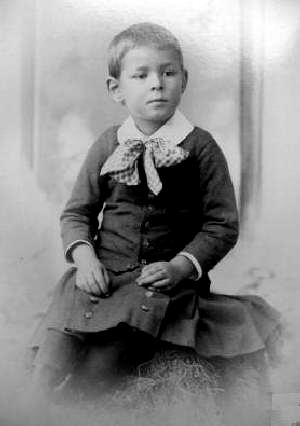
Figure 1.--American boys commonly wore the kilt suit in the 1880s. We see more boys wearing kilt suits than dresses. This was one of the most common outfits for pre-school boys. |

The kilt suit is a garment of some importance. It was widely worn by American boys for nearly half a century. It was also popular in England, but we are less sure about other countries. We think that thetime line in America and England was similar. The Fauntleroy kilt suit which appeared about 1885 seems to have been more popular in American than England.
HBC is not yet sure about the precise chronology of kilt suits. They certainly were a British import--at least the kilt which British princes began wearing in the 1840s. Available information suggests that American kilt suits appear to have originated in the 1860s. Available information suggests that American kilt suits appear to have originated in the 1860s, perhaps the late 1860s. We would guess they first appeared in England or perhaps Scotland, but we can not yet use them. The photographic record cleary shows that they became popular in the 1870s. They were widely worn through the 1890s. They began to decline in popularity after the the turn of the century. They are little seen by the 1910s.
HBC is not yet sure about the precise chronology of kilt suits. They certainly were a British import--at least the kilt which British princes began wearing in the 1840s. HBC has no information as to whether kilt suits existe in the 1840s.
Kilts began to be seen as boys wear in England and France and to a lesser extent America. We note an unidentified American boy in the 1850s. He seems to be wearing an plaid dress. We are not sure just how to desctibeit. We have not yet found, however, examples of the kilt suit from the 1850s. .
A vailable information suggests that American kilt suits appear to have originated in the 1860s, perhaps the late-1860s. We have found afew American examples. AOne such exanmple is Augustus Davies, we think from the late-1860s. We would guess they first appeared in England or perhaps Scotland, but we can not yet use them. The have not yet found any British examples from the 60s, but we suspect that this is aedlection of our limited archive. .
The kilt suit became a popular garment for younger American boys during the 1870s. The Scotch style was described in Godeys Lady Book and Magazine in 1870, "Short pleated skirt striped silk poplin. Jacket of gros grain with square-cut basques black braid trim. Full cambric shirtno waistcoat." [Godey's Lady's Book and Magazine, January, 1870, p.108.] We note several Butterrick patterns for kilt suit oufits in 1876. They were done in sizes up to 8 years. The pattens were marketed in New York and London.
|
American boys commonly wore the kilt suit in the 1880s. We see more boys wearing kilt suits than dresses. This was one of the most common outfits for pre-school boys. Some school age boys might also wear them, but we rarely see the boys wearing kilt suits to school. We suspect that social class factos may have been involved. Kilt suits were not cheap and thus boys from poor families might be lss likely to wear them. They were a fairly conservaive style, often done i very muted plaids. With the advent of the Fauntleroy suit (1885) we begin to see kilt suits done in the Fauntleroy style. We know that kikt suits were also popular in england during the 1880s, but we are less so aou other countries.
|
Kilt suits continued to be widely worn through the 1890s. We see large numbers ofAmerican boys wearing them. Dresses for boys were less common than in the 1880s. Kilt suits seem to have to an extent replaced dresses as suitable outfits for youngr boys. Some boys wore them with Fauntleroy styling. A good example is John Irwin, an American boy, about 1895.
Kiltsuits began to decline in popularity after the the turn of the century, especially 1905. We see fewer boys and younger boys wearing them.
The kilt suitis little seen by the 1910s.
Navigate the Boys' Historical Clothing Web Site:
[Return to the Main kilt suit chronology page]
[Introduction]
[Activities]
[Biographies]
[Chronology]
[Cloth and textiles]
[Clothing styles]
[Countries]
[Topics]
[Bibliographies]
[Contributions]
[FAQs]
[Glossaries]
[Images]
[Images]
[Links]
[Registration]
[Tools]
[Boys' Clothing Home]
Navigate the Boys' Historical Clothing kilt pages:
[Return to the Main kilt page]
[Return to the Main kilt suit page]
[Scottish kilts]
[Scottish boys clothing]
[Scottish school uniform]
[Highland dance]
[Irish kilts]
[Irish boys clothing]
[Irish step dancing]
[Greek kilts]
